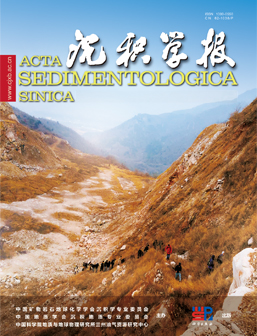The formation mechanism of pyrite in the black shales of the Longmaxi Formation in the Wanhe section, Sichuan Basin and its influences on the climate
doi: 10.14027/j.issn.1000-0550.2025.023
- Received Date: 2025-03-03
- Available Online: 2025-10-30
-
Key words:
- Early Silurian /
- Pyrite /
- Black shale /
- Warming climate /
- South China /
- Yangtze Block
Abstract: The Late Ordovician - Early Silurian witness changes in climate, however, the triggering mechanism are still under debate. In this study, the Longmaxi Formation in the Wanhe section, located in southwestern Sichuan Province, are selected to analyze the depositional and diagenetic processes using sedimentology, mineralogy and geochemistry. Furthermore, this study evaluates the formation mechanism of pyrite in the Longmaxi Formation/carbonate lenticle, and reveals the influences of early diagenesis on the changes in climate. The results show that the black shales in Longmaxi Formation are mainly deposited under euxinic anoxic water conditions, considering the high Corg/P ratios, high UEF and VEF values. The organic matter in the sediments is anaerobically oxidized by the microbial sulfate reduction (MSR) process due to anoxia of waters above the water?rock interface. In addition, the sulfate-driven anaerobic oxidation of methane (SD-AOM) resulted in the precipitation of euhedral pyrite with high Co contents and δ34Spyr values (>10‰) and low V contents. Of course, the influences of TSR in late diagenesis on the formation of pyrite in studied areas need more work in the future. Given that methane is a greenhouse gas, this study suggested that the release of methane formed in early diagenesis has the potential to influence the hydrochemical conditions in seawater or warming climate in early Silurian.
| Citation: | The formation mechanism of pyrite in the black shales of the Longmaxi Formation in the Wanhe section, Sichuan Basin and its influences on the climate[J]. Acta Sedimentologica Sinica. doi: 10.14027/j.issn.1000-0550.2025.023 |






 DownLoad:
DownLoad: